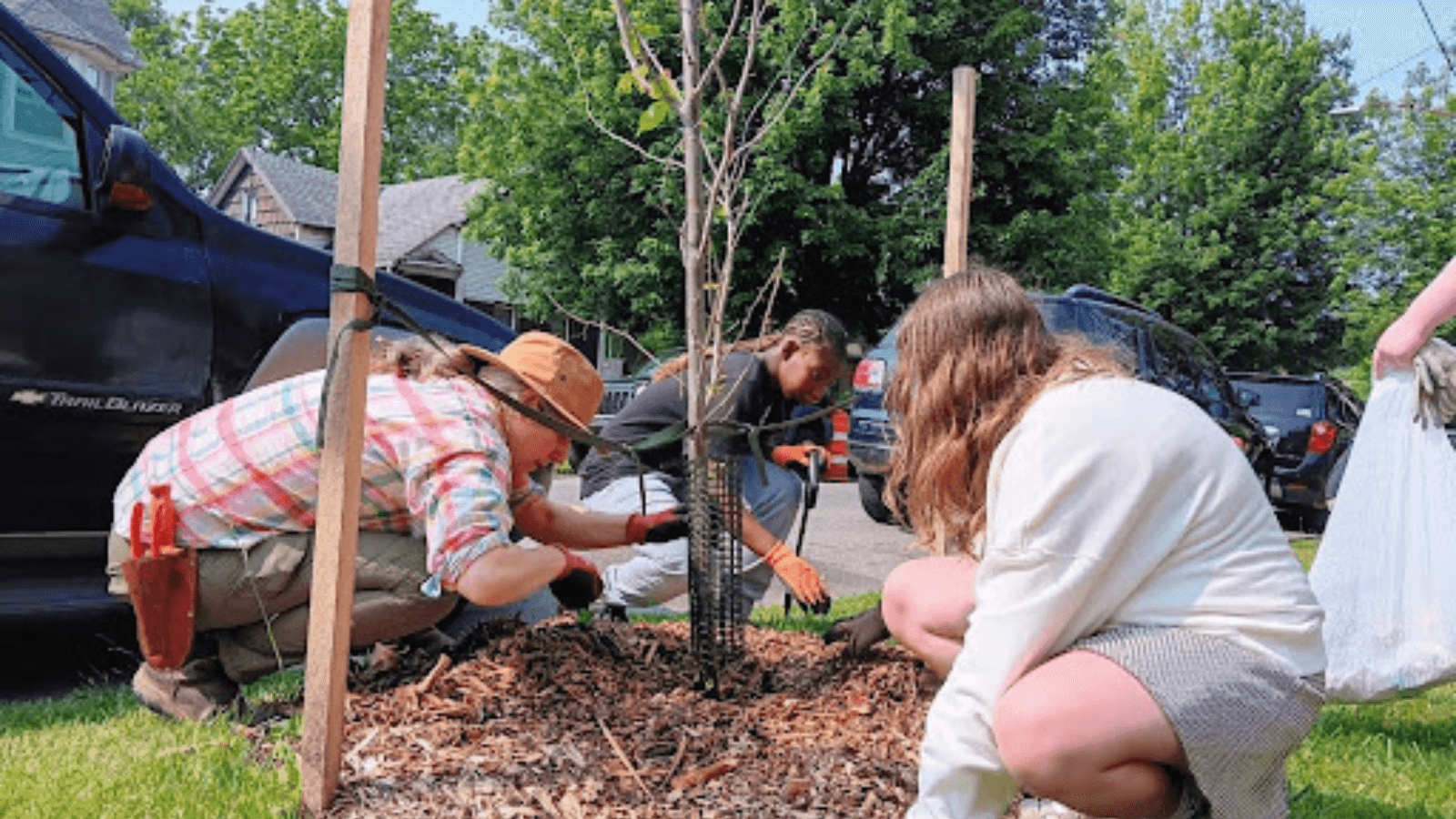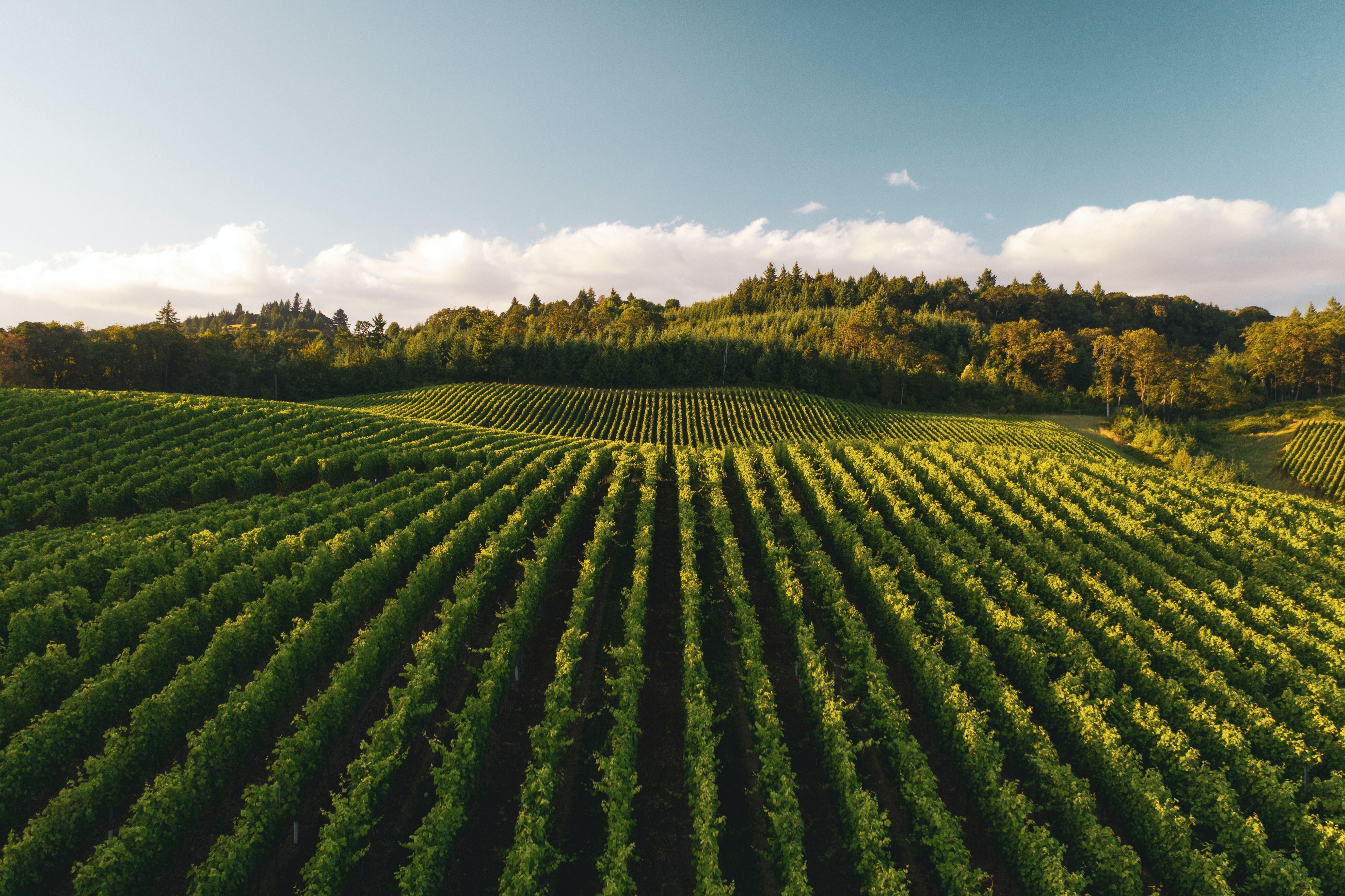
Then God said, “Let the land produce vegetation: seed-bearing plants and trees on the land that bear fruit with seed in it, according to their various kinds.” And it was so. The land produced vegetation: plants bearing seed according to their kinds and trees bearing fruit with seed in it according to their kinds. And God saw that it was good. (Genesis 1:11-12, NIV).
In the backyard of our parsonage home in Cleveland stands a 110-year-old pin oak tree. It shelters our yard and fire pit, the church yard, and two neighboring houses as well. Squirrels live and play in its strong branches, and its leaves are a warm orange in autumn.
When I look up at the tree, sometimes I think of the Christmas tree farm in Michigan that I worked on as a teenager, or the North Dakota cottonwood grove that I played under as a child. Trees are essential wherever we live, for shade, for wildlife, for food and fuel, and for the very air we breathe.
But trees are increasingly at risk. The USDA reports that 47 of our 50 states have decreasing tree coverage, and nationally we have lost a startling 10% of our tree cover since 2010. This trend is occurring here in Cleveland too. The tree canopy coverage in my neighborhood is now under 16%, and because of the increasing number of high heat index days, this creates a genuine danger for us. Temperatures on the ground are as much as 6-8 degrees hotter in neighborhoods with reduced tree canopy coverage.
The Evangelical Environmental Network is seeking to meet this crisis head-on. We applied for and received a grant from the Cleveland Tree Coalition to hold tree care sessions for evangelical churches, and to hire a subcontractor to maintain 127 young street trees for the first 18 months after planting.
This past April we held our first EEN tree care workshop. Folks from local churches and from the neighborhood gathered in a park in Cleveland with a certified arborist. After coffee and donuts and a biblical devotion about trees, we learned best practices of tree care: planting location and depth, mulching, staking, watering, and deer protection. We practiced these skills with 10 young trees, including red maples, serviceberries, and redbuds, and we also planted two new black gum trees.
We followed up a month later with a work session on Dudley Avenue in Cleveland, where our subcontractor cares for new trees on the planting strip between the sidewalk and the street. A mother and her teenage daughter participated, and they told me that this was their first time learning about trees.
They have four trees at home, and they wanted to know how to care for them. Later that week I received a text from them, with a “before and after” picture of one of their maple trees whose trunk was entwined with vines. They had heard the arborist mention that vines can choke a tree, and so they removed them.
This is a “win” for EEN: this urban mother and her daughter had no knowledge of tree care before our sessions, and now they had quite literally saved their maple tree as a result of our training. EEN hopes to replicate this story in other locales around the country to give folks the knowledge to care for God’s good creation. May it be so!
Rev. Dean Van Farowe is the Ohio Outreach Coordinator for EEN. He seeks to plant and grow creation care teams in Ohio churches and on college campuses. Dean has been the pastor of Calvary Reformed Church (RCA), a multi-ethnic urban church in Cleveland, Ohio, since the year 2000.

